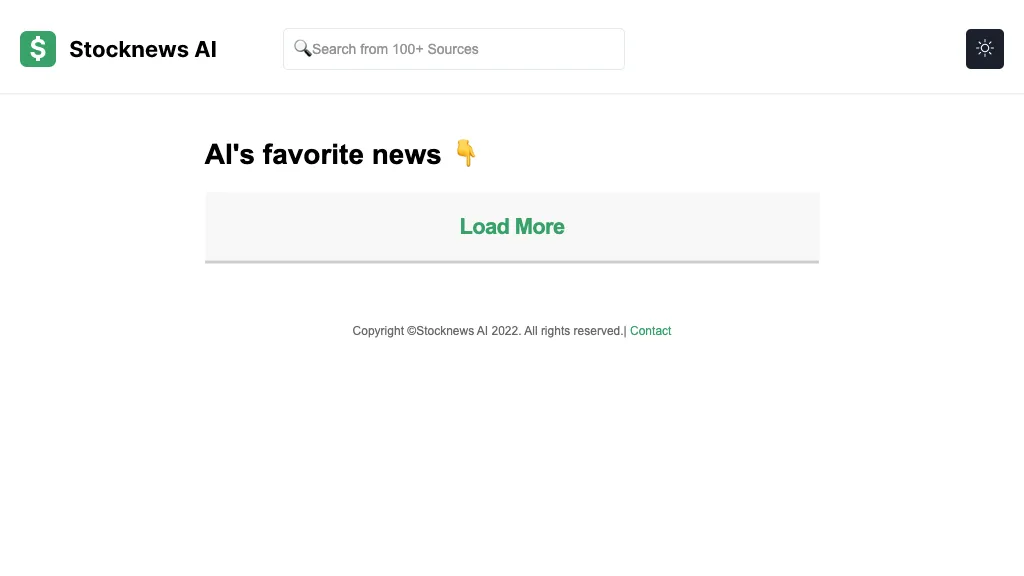20 Best Tips For Deciding On AI Stock Analysis Sites
Top 10 Suggestions For Evaluating The Strategy Customization Of AI stock Predicting And Analyzing Trading PlatformsAI stock-predicting/analyzing platforms offer a number of customization options, which allow users to customize their platform to suit their specific trading objectives, risk appetite, and market conditions. Platforms that offer powerful customization options can improve your trading efficiency. Here are 10 suggestions for evaluating the flexibility of these platforms.
1. Evaluate Pre-Built Strategy Templates
Variety of templates. Make sure the platform comes with a wide range of strategies pre-built for different trading types (e.g. day trading, swing trading or long-term investment).
The ease of use is a good indication.
Performance history: Check whether the platform has historical performance data for previously-built strategies.
2. Examine the effectiveness of Custom Strategy Creation
Drag-and-drop tools: Select platforms that have drag-and-drop interfaces that let you easily develop customized strategies.
Options for Coding: For advanced users be sure to check if the platform supports custom programming using a proprietary scripting language (e.g. Python, R).
Flexibility: You need to be able define the entry/exit criteria as well as risk management parameters, and other aspects that are essential to your plan.
3. Check for Backtesting Capabilities
Historical data. Check if the platform can provide enough historical data to backtest your strategy.
Customizable parameters - Ensure that you can change parameters (e.g. timeframes, indicators) during back-testing.
Performance metrics - Check to see if your platform provides detailed indicators of performance (e.g. the winning rate, Sharpe coefficient or drawdown) for all strategies tested back.
4. Evaluate Real-Time Strategy Testing
Paper trading: Check if the platform provides paper trading and simulation modes for testing strategies in real time, without taking risks with your capital.
Live testing: Determine whether you can test your strategies in real-world markets with only a small amount of capital.
Real-time adjustments: Determine if it is possible to adjust strategies according to current market conditions.
5. Integrate integration with technical indicators
Find out if there's an indicator library.
Custom indicators. Ensure that you have the ability to create or use custom indicators in your strategy.
Combination of indicators: Check to see if the system allows the combination of multiple indicators to create more complex strategies.
6. Check for Risk Management Tools
Stop-loss/take-profit: Ensure the platform allows you to set stop-loss and take-profit levels within your strategies.
Size of the position: Determine if you are able to define rules for position sizing (e.g. the amount that is fixed or percentage of the portfolio) to control risk.
Risk-reward-ratio: Check the platform's capabilities to set risk/reward ratios on specific trades or trading strategies.
7. Evaluate Multi-Asset Strategy Support
Asset classes: Ensure that the platform can handle various asset classes including ETFs, stocks and options.
Cross-asset Strategies: Determine if it is possible to develop strategies that combine multiple asset classes.
Market coverage. Make sure the platform covers the markets that you are interested in (e.g. US international, cryptocurrencies).
8. Review Automation and Execution
Automated trading: Make sure the platform can automate execution of strategies using predefined rules.
Types of orders: Ensure that the platform is able to execute different types of orders like stop, limit, market and stop.
Latency - Verify the platform's capability to perform trades on time particularly when you are using high-frequency strategies.
9. Check for Strategy Optimization Tools
Parameter optimization. Be sure that your platform allows you to optimize the parameters of your plan (e.g. Grid search Genetic algorithms).
Machine learning integration. Check if your platform incorporates machine learning capabilities to optimize and refine strategies.
Scenario analysis: Check if the platform permits you to test various strategies under different market situations (e.g. bear or bull, volatile).
Read the Community Feedback and User Reviews
User reviews: Research reviews from users to assess the effectiveness of the platform's strategy customization.
Community forums: Find out whether the platform has an active community of users who can discuss and share their custom strategies.
Support resources: Make sure the platform has tutorials, webinars, or other documentation to help users create and improve their strategies.
Bonus Tips:
Trial period: Use a free trial or demo to test the platform's strategy customization features.
Scalability is important. The platform needs to be able to handle strategies that become more complex as your trading grows.
Customer Support: Ensure that the platform provides support for any strategy-related concerns or questions.
These tips will assist you in assessing the capabilities of AI trading platforms to customize their strategies. You will be able decide which one best fits your trading requirements and makes it possible to you to fine-tune and implement your plan. A platform that has flexible options for customization can allow users to be able to change market conditions and enhance your trading performance. Read the top rated inciteai.com AI stock app for website recommendations including ai trade, best AI stock trading bot free, ai for stock predictions, AI stocks, ai investing app, best ai for trading, ai for investing, ai investing, ai for investment, incite and more.

Top 10 Tips For Evaluating The Speed And Latency Of Ai Trading Platforms
For algorithmic, high-frequency, and active traders, speed and latencies are crucial when looking at AI platforms to forecast stock prices and analyze. A delay of just milliseconds can affect profitability and trade execution. Here are the top 10 tips for measuring the speed of your platform.
1. Real-Time data feeds are a great way to evaluate the quality of the real-time data you have
Data delivery: Make sure that the platform can to provide data in real-time with minimal delay (e.g. less than milliseconds).
Data source proximity - Look to determine if the servers on your platform are near major exchanges. This can reduce the speed of data transmission.
Data compression: Verify whether the platform utilizes effective techniques for data compression to speed up data delivery.
2. Test the Trade Execution speed
Order processing speed The speed at which the platform processes and executes trades following your submission of an order.
Direct Market Access (DMA) - Ensure that your platform supports DMA. This allows orders to go directly to the exchange without the need for intermediaries.
Execution Reports: Check if your platform offers specific reports on the execution of orders, with timestamps.
3. Review the responsiveness of the Platform
User interface (UI speed) Find out how fast the system responds to inputs, such as clicking buttons or loading charts.
Chart updates: Verify if charts and visualizations update in real-time without lag.
Mobile app performance: If you are using a mobile application make sure it runs as quickly as the desktop version.
4. Verify that the infrastructure is low-latency.
Locations of the servers The platform should utilize low-latency, high-speed servers that are located close to major exchanges or financial hubs.
Co-location: If your platform allows co-location, then you can host your trading algorithm on servers that are near the exchange.
High-speed Networks: Check the use of high-speed, fiber-optic network, or other technology with low latency.
5. Evaluation of Backtesting and Simulation speed
Processing of historical data: See how quickly the platform processes and analyzes the historical data to backtest.
Simultaneous trade simulation The platform must be able to simulate live trading with no apparent delays.
Parallel processing: Verify that your platform is using parallel or distributed computing to increase the speed of calculations.
6. Calculate API Latency
API response times: Determine how quickly APIs respond to requests (e.g. getting information from the platform, putting in orders).
Rate limits. Verify the API's rate limits to avoid any delays when high-frequency trading.
WebSocket Check if the platform is compatible with WebSocket protocols, which allow for streaming of data in real-time with low latency.
7. Test stability of the platform under load
High-volume trading to test the platform's ability to respond and stability, you can simulate high-volume scenarios.
Check the platform during times of high volatility in the market to see if it is able to handle sudden changes in price.
Find out whether there are any tools that allow you to test strategies in the most extreme of circumstances.
8. Examine network and connectivity
Internet speed requirement: For optimal performance, ensure that your internet speed meets the recommended speed for your platform.
Redundant connections: Verify whether your platform has redundant internet connections. This will help you avoid interruptions.
VPN latency: When you use the VPN platform, check if the latency is significant and also if there are alternative options.
9. Look for Speed Enhancement Features
Pre-trade analyses The platform must provide pre-trade analysis to help optimize process of routing orders and speed up execution.
Smart order routing (SOR) often referred to as smart order routing is a method for determining the most efficient and efficient execution sites.
Latency monitoring: Determine whether your platform comes with tools that let you analyze and monitor latency real-time.
Benchmarks for User Feedback Review
User reviews: Examine the feedback of users to determine the platform's performance in terms of speed and latency.
Third-party benchmarks: Search for independently-run benchmarks or reviews comparing the speed of the platform to other platforms.
Case studies: Check whether the platform has case studies, or testimonials that showcase its abilities to provide low-latency.
Bonus Tips:
Trial period: Take advantage of an unpaid trial or demo to test the platform's speed and latency in real-world scenarios.
Customer support: see if the platform provides assistance for issues with latency or optimization.
Hardware requirements: Find out if the platform needs specific hardware for optimal performance.
These suggestions will allow you assess the speed and duration of AI stock-predicting/analyzing trading platforms. In this way you'll be able choose a platform which meets your requirements while minimizing delays. Low latency can be crucial for traders who trade high-frequency, or algorithmically where even small delays can be a significant factor in their profitability. Follow the best best ai penny stocks blog for site examples including best AI stocks to buy now, best AI stocks, invest ai, AI stock trader, stock predictor, can ai predict stock market, best ai for stock trading, ai copyright signals, best ai penny stocks, AI stock price prediction and more.
